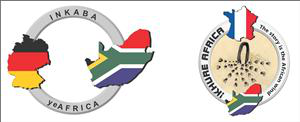Speaker
Ms
Shereen Slamang
(Nelson Mandela Metropolitan University)
Description
The area of study lies in the Eastern Cape, approximately 20km north of Grahamstown, in the direction of Fort Beaufort. The main rock outcrops are along the Ecca Pass and approximately 10km east of the pass, along the Committees Drift Road. The area was chosen as it incorporates an exceptionally well exposed outcrop portraying all the formations of the lower Ecca Group of the SE Karoo Basin in succession. The research aims at documenting the structural and sedimentological characteristics of the lower Ecca Group, with emphasis on the Prince Albert, Whitehill, and Collingham Formations. Geologic cross sections completed to date provide the basis for understanding the 3-D anatomy of the three formations. Facies characterisation and petrographic analysis are still to be undertaken, in order to infer the sedimentary environment of the lower Ecca Group.
The mudstones of the Prince Albert Formation along the Ecca Pass are mostly light coloured (e.g. light yellow brown), and the mudstones along the Committees drift road are mostly darker in colour (e.g. deep green). Open folding is present in the Whitehill Formation along the Ecca Pass and duplex faulting evident in the Prince Albert Formation along the Committees Drift Road. The Collingham Formation comprises of many layers of ash of various tints of yellow. The Ecca Group is thought by some to have been deposited in a large body of water surrounded by land and consists of approximately 2000m of sedimentary rock composed predominantly of rhythmites (comprising of tuff, mudstones, sandstones, and shales). The combined thickness of the Prince Albert, Whitehill, and Collingham Formation is approximately 130m. This makes up about 6.5% of the total thickness of the Ecca Group. These formations contain mostly organic rich shales and lesser tuffaceous and siltstone horizons.
The shales of the Whitehill Formation are of particular interest to exploration companies as a potential reservoir of natural gas, as they are rich in organic content. Fracking in the U.S. has grown over the past decade, as has the wealth of information around the industry. Because of the large scale success in the U.S., many countries including South Africa that have potential shale gas reserves have started exploring for shale gas. There is currently a great deal of speculation as to the amount of shale gas reserves, and exploration is necessary to determine the gas potential.
Primary author
Ms
Shereen Slamang
(Nelson Mandela Metropolitan University)
Co-authors
Prof.
Daniel Mikeš
(Nelson Mandela Metropolitan University)
Prof.
Maarten de Wit
(NMMU AEON)
Prof.
Peter Booth
(NMMU)

